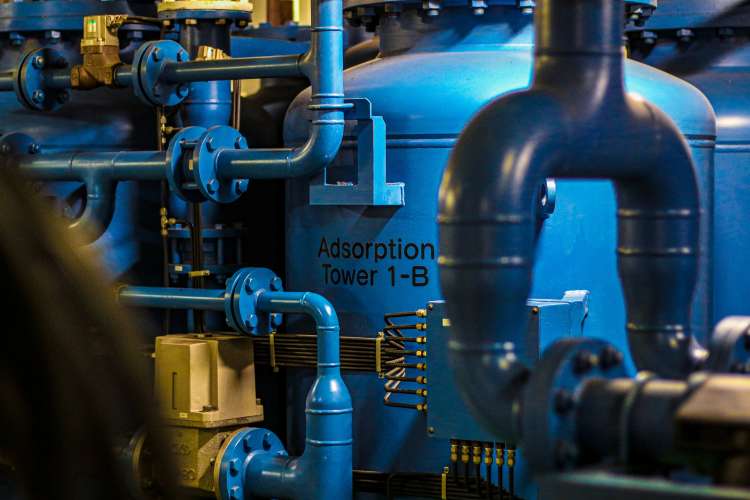
The Union government has announced plans to invest $67 billion in the natural gas sector over the next five to six years as it looks to promote clean energy. Prime Minister Narendra Modi emphasised the significance of this investment at the second India Energy Week (IEW), stating it will play a crucial role in developing the country’s energy infrastructure. This move is part of the government’s strategy to attract global investors to its energy sector. The plan is to increase the share of natural gas in its energy mix to 15% from the current 6%, boosting the share of clean energy in India’s energy portfolio.
Natural gas is regarded as the most environment-friendly fossil fuel because it emits 50–60% less carbon dioxide compared with coal or petro fuels, and its greenhouse gas emissions have a shorter lifespan. As a non-renewable energy source, natural gas could be a key element in achieving a sustainable future.
READ | RBI ban on Paytm Payments Bank rocks fintech sector ahead of crucial IPOs
During the presentation of the Interim Budget on February 1, finance minister Sitharaman proposed a capital expenditure of Rs 11 trillion, a significant portion of which will support investments in the energy sector. As the world’s fastest-growing major economy, it is imperative for India to accelerate its transition to green energy to meet its escalating energy demands. Currently, India is the third largest consumer of energy and oil globally.
India’s natural gas sector
According to the International Energy Agency’s (IEA) Gas Market Report, India’s natural gas demand is projected to increase by 6% in 2024, driven by higher consumption in the fertilizer, power generation, and industrial sectors. Despite rising demand, India imports 44% of its natural gas, as domestic production falls short of meeting its needs.
Liquefied natural gas (LNG) imports grew by 7% year-on-year to 29 billion cubic meters last year, with the power and fertilizer sectors being significant contributors to this increase. Notably, power companies imported 2.32 billion cubic meters of LNG in 2023, accounting for about 9% of total imports — a 76% increase from the previous year.
Efforts to boost domestic production are underway, with a 6% year-on-year increase to 35 billion cubic meters. Despite the government’s ambitious plans, challenges remain. Concerns exist around ensuring fair competition and transparency in the newly liberalised gas market. Streamlining regulations and expediting approvals for exploration and production projects are crucial to accelerate domestic gas production. Additionally, attracting investments for developing LNG terminals and storage facilities is essential to meet future demand spikes.
Last year, India approved the mandatory blending of compressed biogas into its domestic gas supply, effective from 2025. Initially set at 1% of total consumption, this mandate will gradually increase to 5% by 2028-29.
The IEA has also acknowledged various reforms India has undertaken to improve its gas sector. These include the introduction of a unified pipeline tariff system, benefiting consumers distant from gas sources or LNG terminals. The Unified Tariff Policy creates a single, equitable tariff structure for nationwide natural gas transportation, covering approximately 90% of pipelines either operational or under construction.
The “One Nation, One Gas Grid” initiative is a significant step towards enhancing natural gas accessibility in India, involving the construction of a 33,592 km pipeline network. With 23,173 km already operational and an additional 12,206 km under construction, this project lays a strong foundation for expanding the gas network. India is also exploring the establishment of strategic gas reserves to improve supply security and aims to become a leading producer and exporter of hydrogen.
To achieve the targeted increase in the energy mix from 6% to 15%, several initiatives have been launched, including the expansion of the National Gas Grid Pipeline, City Gas Distribution (CGD) network, and the establishment of Liquefied Natural Gas (LNG) terminals. Additionally, the government has granted marketing and pricing freedom for gas produced from specific sources, encouraging domestic exploration and production.
The government’s initiatives have been well-received by the industry. However, further measures are essential for India to transition fully to a gas-based economy. India’s gas sector stands at a pivotal juncture. The government’s proactive approach presents exciting opportunities for investors and stakeholders. Successfully navigating the challenges and capitalising on these opportunities will be key to achieving the targeted 15% gas share in the energy mix. This transition would not only fuel India’s economic growth but also contribute significantly to its clean energy goals, paving the way for a more sustainable future.
Prashant Modi, a leading industry figure and head of FICCI’s Oil & Gas Committee, has suggested implementing a direct benefit transfer system for gas subsidies, akin to the LPG model, to improve efficiency and targeting. Moreover, there is a pressing need for a standard operating procedure across the gas infrastructure ecosystem to ensure compliance, enhancing transparency and oversight.
